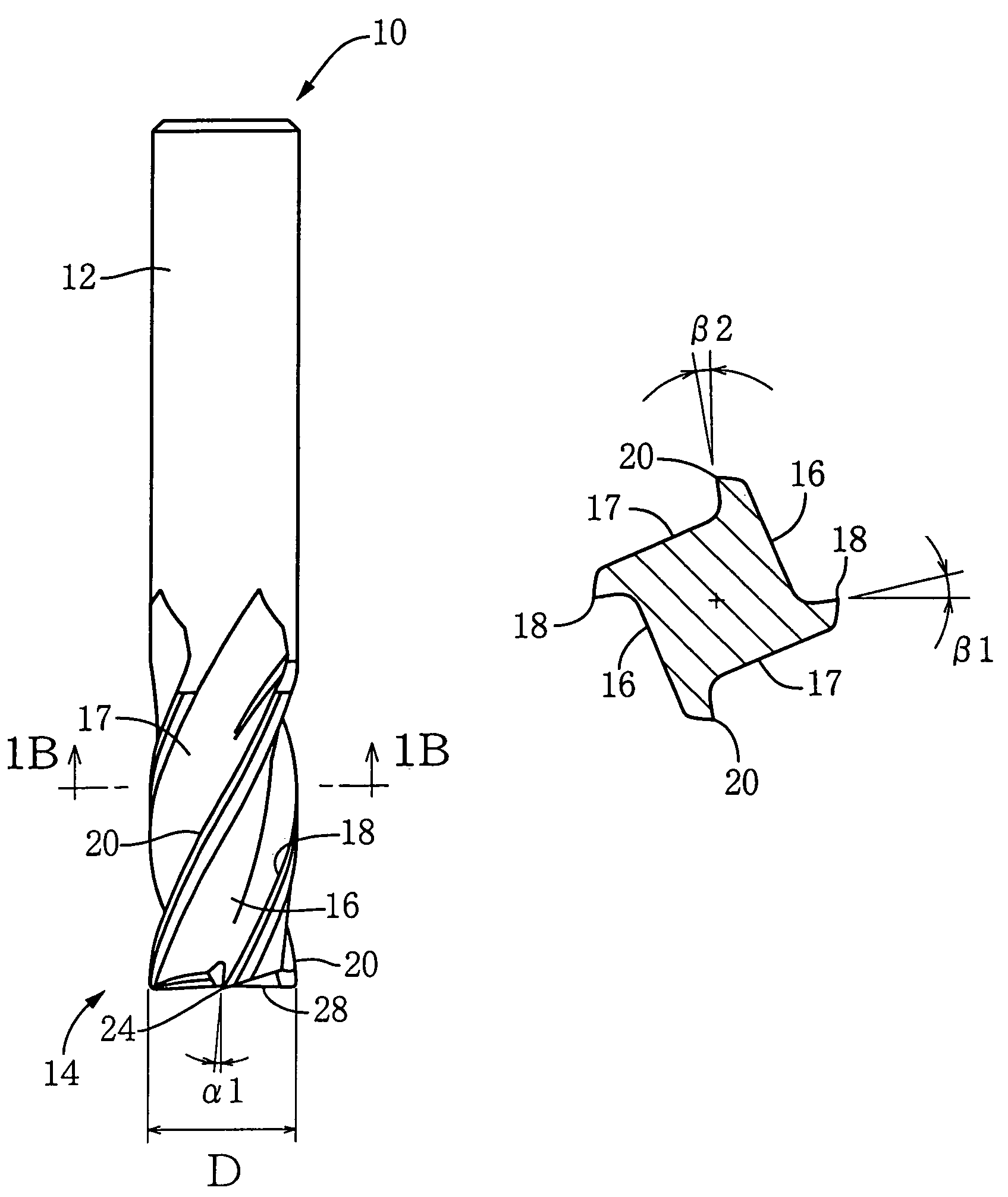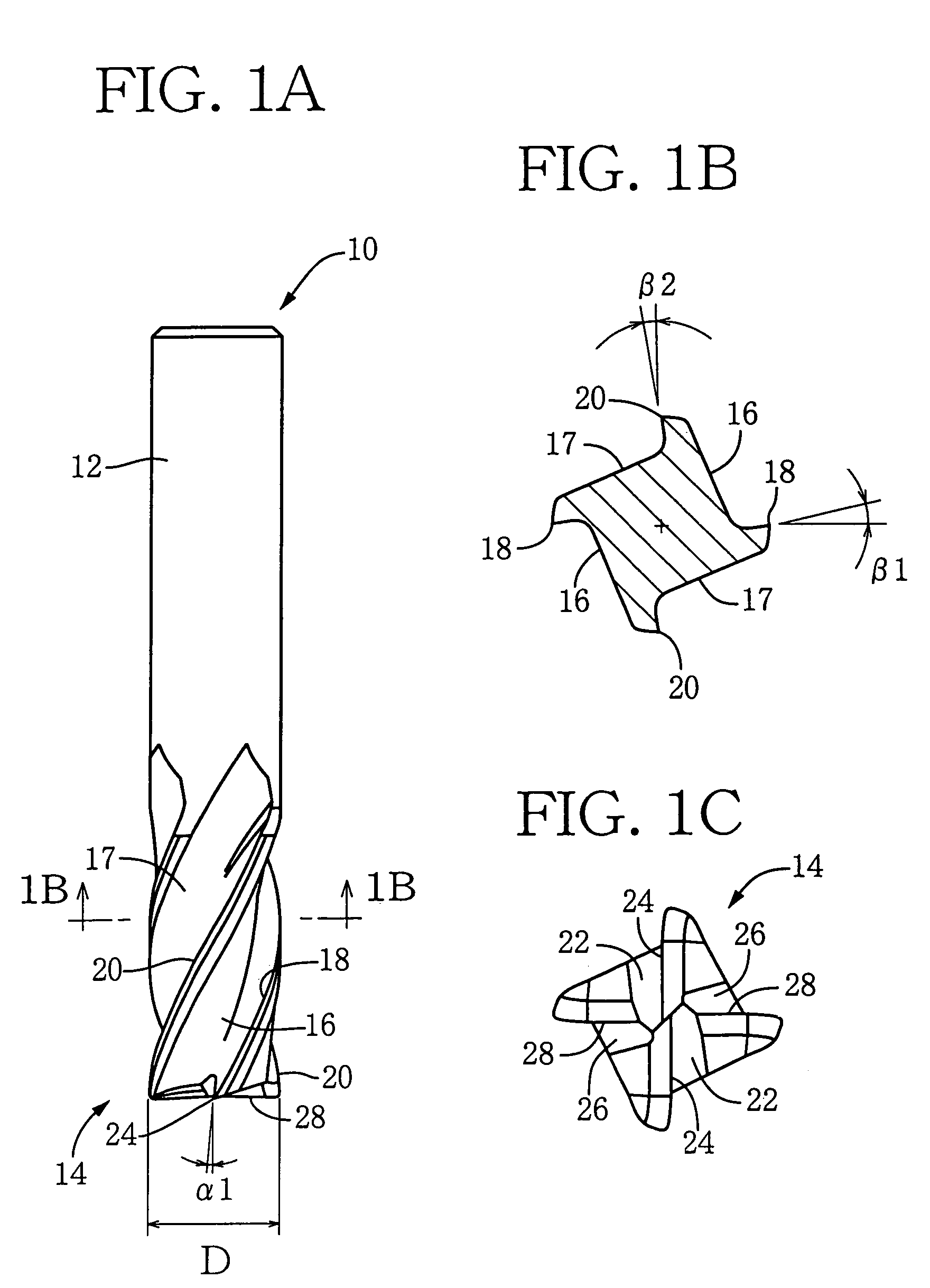End mill having different axial rake angles and different radial rake angles
- Summary
- Abstract
- Description
- Claims
- Application Information
AI Technical Summary
Benefits of technology
Problems solved by technology
Method used
Image
Examples
Embodiment Construction
[0038]Referring first to FIGS. 1A–1D, there will be described a four-flute square end mill 10 which is constructed according to an embodiment of this invention. FIG. 1A is a front elevational view of the end mill 10. FIG. 1B is a cross sectional view taken along line 1B—1B of FIG. 1A. FIG. 1C is a bottom view of the end mill 10. FIG. 1D is a side elevational view of the end mill 10, in other words, a front elevational view of the end mill 10 as rotated by 90° about its axis from its angular position of FIG. 1A. This end mill 10 is provided by a cylindrical body made of a cemented carbide. The cylindrical body has a shank portion 12 and a fluted portion 14 which are coaxial with each other. Four helical flutes 16, 17 are formed in an outer circumferential surface of the fluted portion 14 such that the four helical flutes 16 are located around the axis and are equi-angularly spaced apart from each other at an angular interval of 90°. Four peripheral cutting edges 18, 20 are formed alo...
PUM
 Login to View More
Login to View More Abstract
Description
Claims
Application Information
 Login to View More
Login to View More - R&D
- Intellectual Property
- Life Sciences
- Materials
- Tech Scout
- Unparalleled Data Quality
- Higher Quality Content
- 60% Fewer Hallucinations
Browse by: Latest US Patents, China's latest patents, Technical Efficacy Thesaurus, Application Domain, Technology Topic, Popular Technical Reports.
© 2025 PatSnap. All rights reserved.Legal|Privacy policy|Modern Slavery Act Transparency Statement|Sitemap|About US| Contact US: help@patsnap.com



